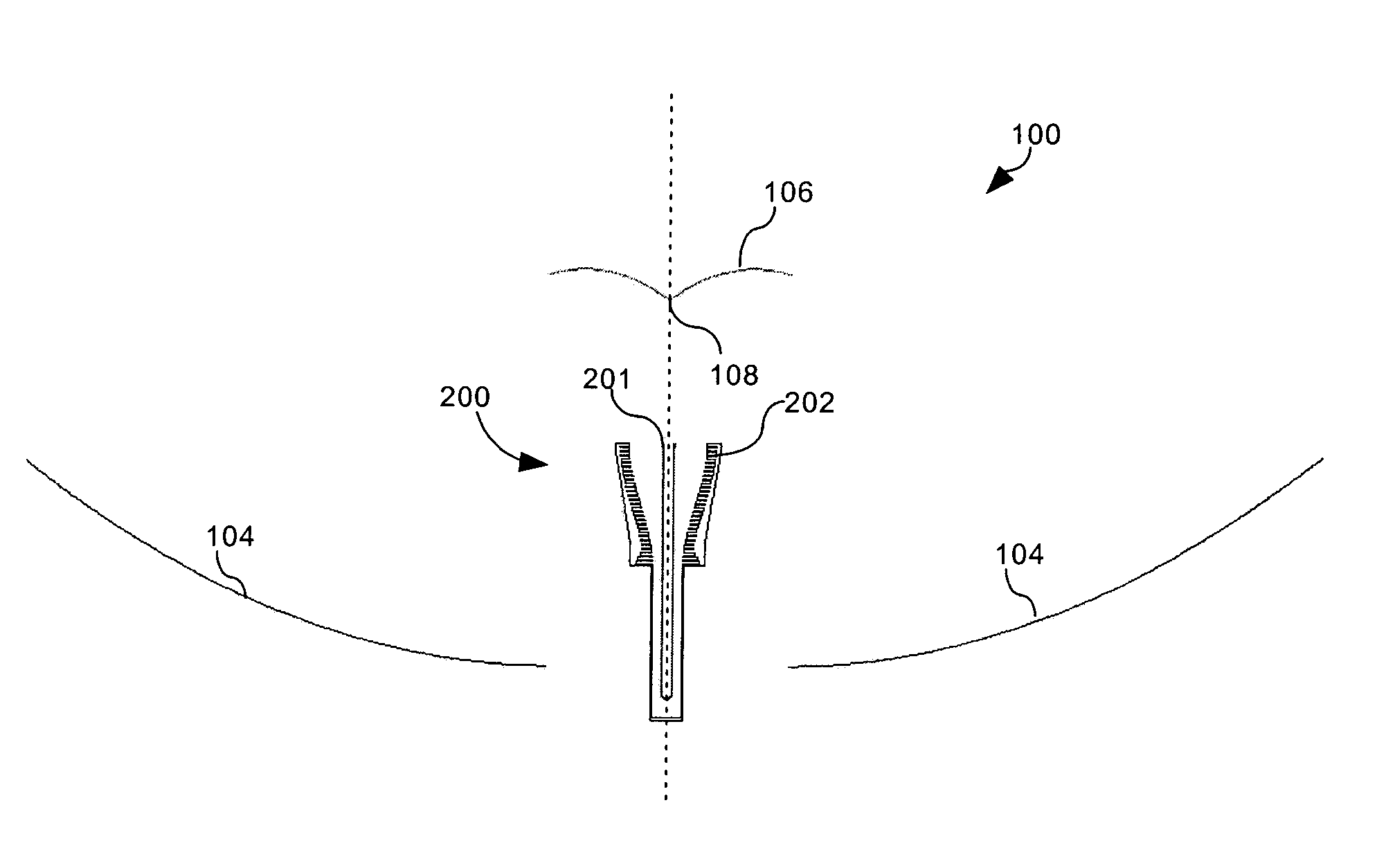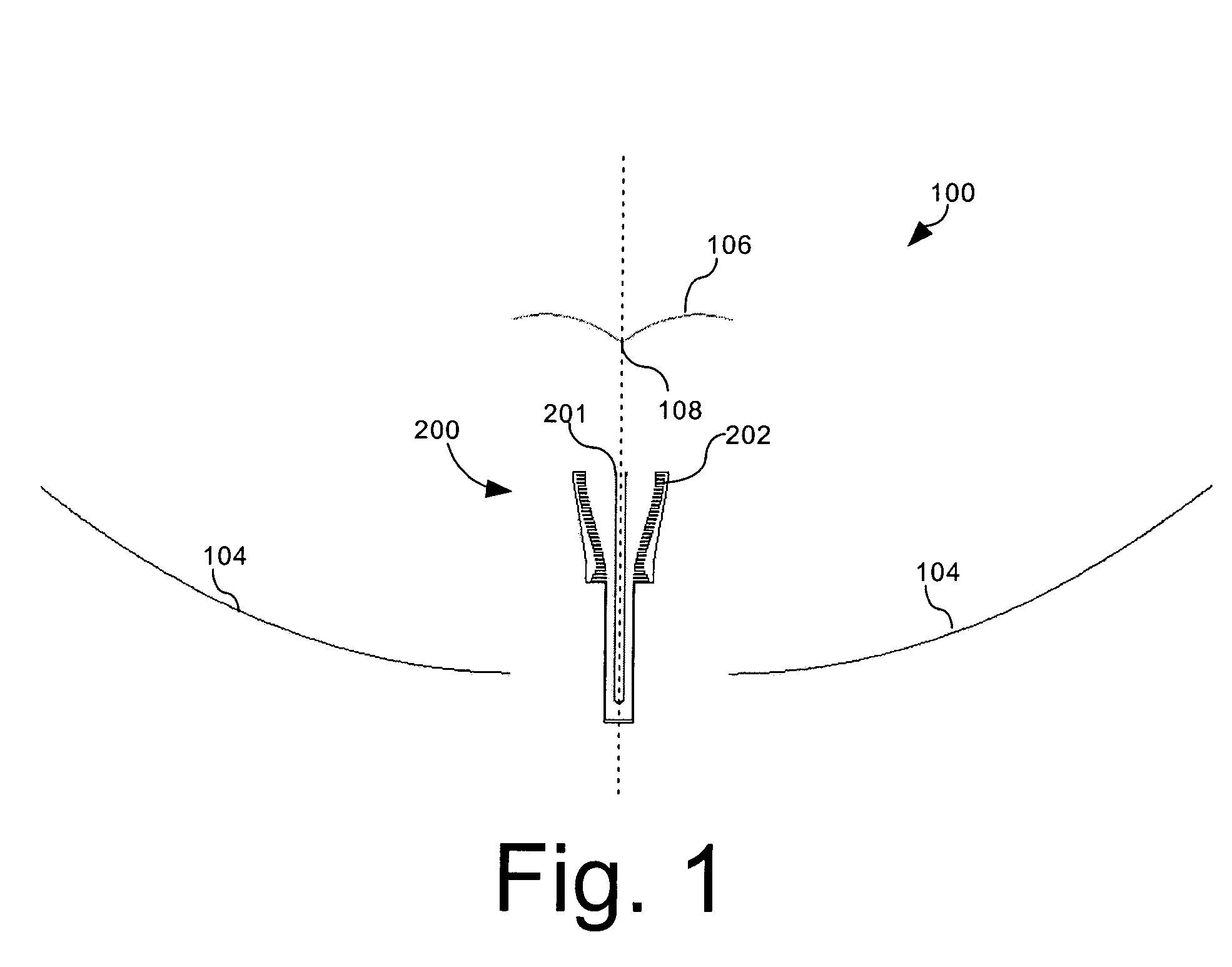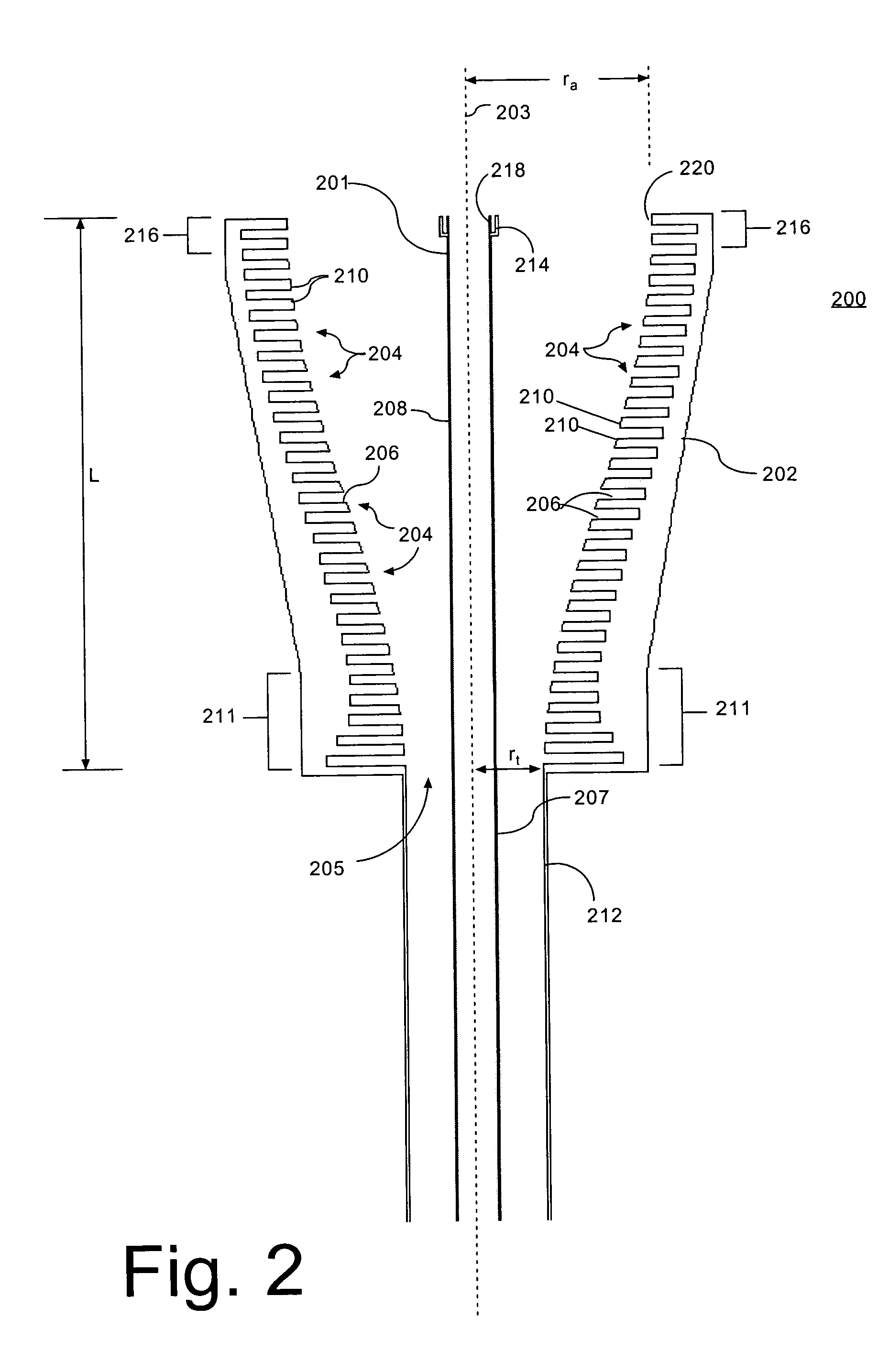Coaxial horn antenna system
a horn antenna and coaxial technology, applied in the direction of antennas, waveguide horns, electrical equipment, etc., can solve the problems of system not offering concurrent operation on spectrally offset frequency bands, system specifications that cannot be changed and system specifications that cannot be maintained without changing the design of main reflectors. , to achieve the effect of minimizing the interaction of corrugations
- Summary
- Abstract
- Description
- Claims
- Application Information
AI Technical Summary
Benefits of technology
Problems solved by technology
Method used
Image
Examples
Embodiment Construction
[0020]Referring to FIG. 1, a main reflector 104 and sub-reflector 106 are shown for a ring-focus, dual band antenna system 100. Ring-focus antenna systems are well known in the art. Such antennas are advantageous, as they are compact designs that offer acceptable performance for many communications applications. Main reflector 104 and sub-reflector 106 are typically shaped surfaces of revolution disposed about a boresight axis. Further, the main reflector 104 and the sub-reflector 106 can be designed for multi-band operation. For example, the main reflector and the sub-reflector can be designed to operate concurrently at X-band, K-band and Ka-band.
[0021]In a conventional ring-focus antenna systems, interchangeable microwave feed horn antennas can be swapped out for operating on different frequency bands. For example, one horn can be designed for operation on X-band whereas a second horn can be designed for operation on K-band. By swapping out different horns, the antenna system can ...
PUM
 Login to View More
Login to View More Abstract
Description
Claims
Application Information
 Login to View More
Login to View More - R&D
- Intellectual Property
- Life Sciences
- Materials
- Tech Scout
- Unparalleled Data Quality
- Higher Quality Content
- 60% Fewer Hallucinations
Browse by: Latest US Patents, China's latest patents, Technical Efficacy Thesaurus, Application Domain, Technology Topic, Popular Technical Reports.
© 2025 PatSnap. All rights reserved.Legal|Privacy policy|Modern Slavery Act Transparency Statement|Sitemap|About US| Contact US: help@patsnap.com



